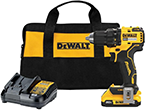Anyone that has ever tried to paint brand new drywall can tell you that it is nothing close to the same as painting a finished wall. There are various technical reason why this is the case, but it basically boils down to the fact that if you simply paint untreated drywall, the paint won't stick. Painting new drywall requires a few additional steps, and isn't all that difficult to do. Simply follow these directions to ensure that you do the job the right way.
- Check the joints. Before you begin painting your new drywall, you will need to check the joints and the nails or screws that are holding the drywall in place. The joints are where the various pieces of drywall meet, and you should be able to see these areas quite easily due to the tape and mud used to seal them. In the event that the joints haven't been taped and mudded as they should, then you need to do that prior to any paint work.
- Prepare the area. Remove any furniture or items that you have in the room to ensure that they do not end up getting paint on them. Any items that you can't remove should have a drop cloth placed over them, in addition to a large drop cloth being placed on the flooring as well. Set out the tools and paint that you will be using, in a location where they won't be tripped over, and ensure that they are clean before you use them. In addition, you will want to apply some painter's tape to any areas that you don't want to get primer on. Such areas can include trim, light switches, and windows.
- Apply primer. If you are painting a large area of drywall, then you will need to use a roller for your painting (it helps make the work go faster and smoother). Pour the primer into a roller tray, and then coat the roller with the primer. Apply the primer over the entirety of the drywall, using a "W" shaped pattern. Reapply the primer to the roller as needed to do the work. In tight areas you may want to use a paintbrush to help apply the primer properly.
- Check your work. While you allow the primer to dry completely, wash out the paint roller, brush, and the roller tray. This will help prevent the primer from drying and ruining the roller and roller tray. By the time that you have finished cleaning your painting tools, the primer should also be dried. Check the work to ensure that you have completely covered the drywall that you wish to paint. If not, you will need to apply some more primer to those particular areas, repeating the process of cleaning when you are done.
- Paint. Before you begin painting, you may want to replace the painting tape that you had in place earlier. This way you will potentially do less damage when you remove the tape after painting. When you are ready to begin painting, simply follow the same process that you used when applying the primer. When painting, you really should apply two coats of paint before you are ready to really inspect your work. Allow the paint to dry completely between each
- Check your work. Once you have applied at least two coats of paint, you will need to allow it to dry completely. After it has dried, you can then check and inspect your work. Simply touch up any areas that you feel need a bit more work, and you are pretty much finished.
- Clean it up. To truly finish your drywall-painting job the right way, you will need to clean up properly. This means that you will need to wash out the painting tools such as the brush and roller, in addition to removing the drop cloths that you laid out before. Once all of this has been done, you can begin returning the items that you removed earlier, or otherwise decorating the room as you wish.
Once you have finished painting the drywall, make sure that you keep track of what paint you used. Any leftovers that you may have on hand should be stored properly, and away from places that pets or small children can get to it. In the event that you don't have any, make note of the name, brand, and type of paint. This way if you have to do any repairs or touchups in the future, you can properly match the existing color.
Author Bio
Lee Wyatt
Contributor of numerous Tips.Net articles, Lee Wyatt is quickly becoming a regular "Jack of all trades." He is currently an independent contractor specializing in writing and editing. Contact him today for all of your writing and editing needs! Click here to contact. Learn more about Lee...
Spice Racks
Spice racks are a necessity for the truly enthusiastic home chef. Without a properly organized and stocked spice rack, ...
Discover More
Tightening a Door Hinge
Chances are that if you walked through your home right now, you could find at least one door that has a loose door hinge. ...
Discover More
Removing a Wall
Sometimes the only way to improve something, is to destroy it first. One example of this is when you need to remove a ...
Discover More
More Home Improvement Tips
Testing for Oil or Water Based Finishes
When redoing the woodwork in your home one of the most important steps is to determine what kind of existing finish you ...
Discover More
How Do You Rag Paint a Wall?
If you are looking for a fantastic way to paint your wall, and create a truly unique look then you simply have to look ...
Discover More
Painting Aluminum Siding
Aluminum siding is an ever increasingly popular choice among homeowners for protecting their home. In large part this ...
Discover More

Comments